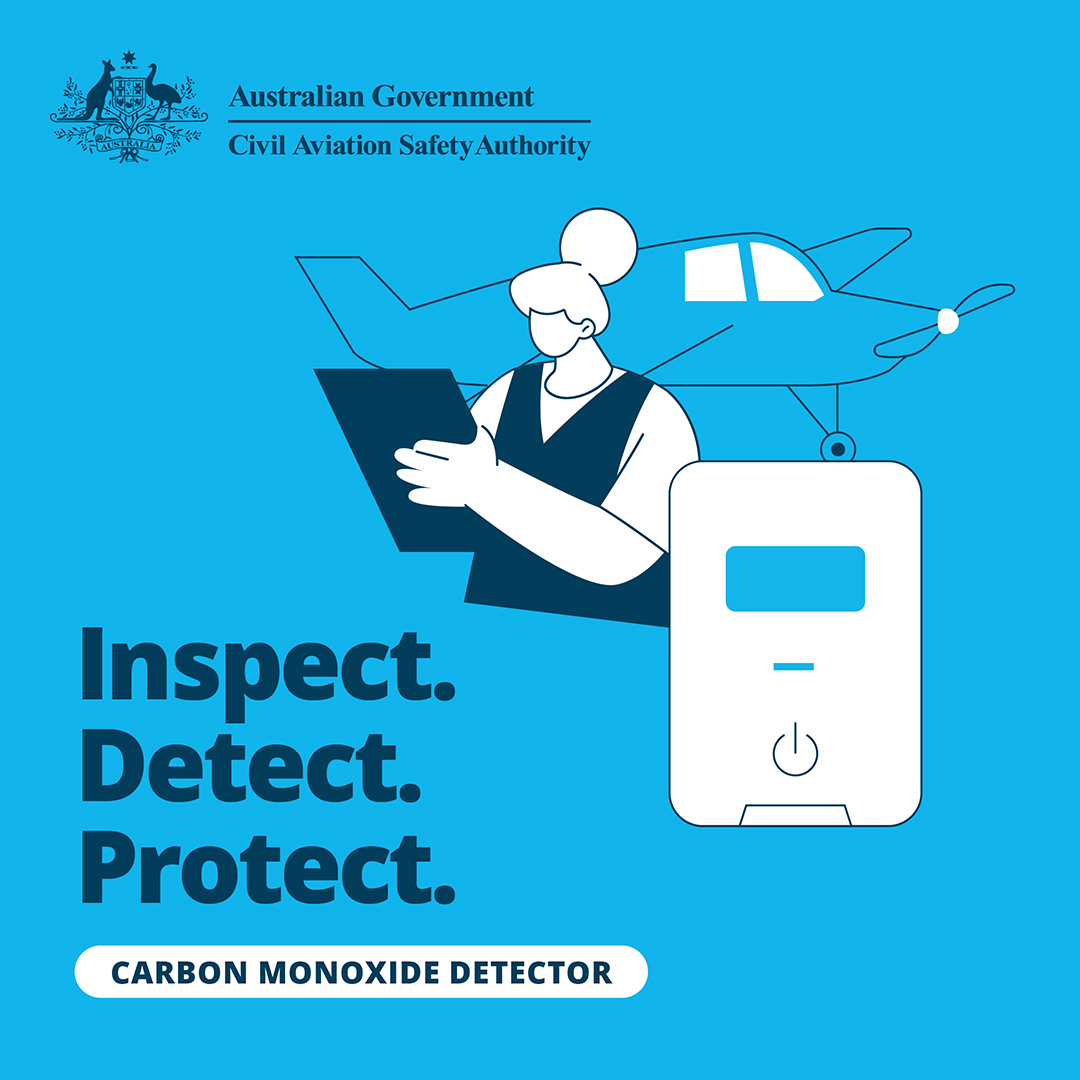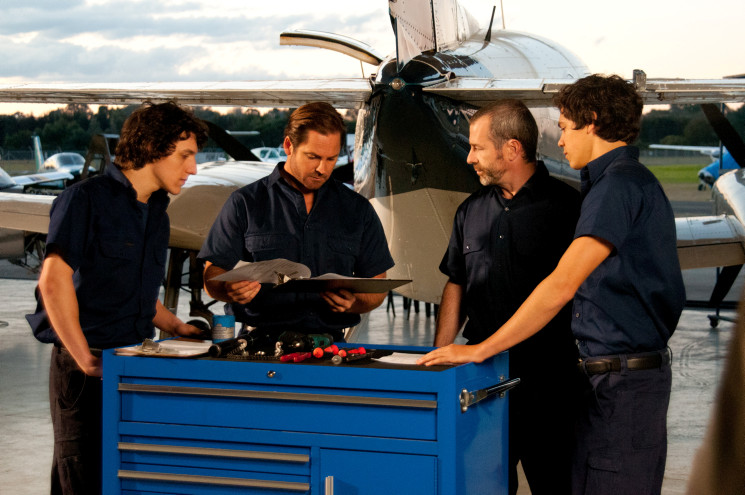Maintenance personnel play an important role in ensuring the structural integrity of aircraft. This toolbox talk dives into the topic of carbon monoxide and discusses different ways potential leaks can be mitigated.
Tips on what to cover
Aim
• increase awareness and understanding of what carbon monoxide poisoning is
• recognise the symptoms and how it can affect the human mind and body
• look at what your workplace is doing or can do in relation to this issue.
Background
Carbon monoxide (CO) is a colourless, odourless, and tasteless gas that cannot be detected by the human senses.
It is a by-product of fuel consumption in piston engines and is expelled through an engine’s exhaust system.
In an aircraft, if the integrity of an engine casing and associated components are compromised, carbon monoxide gas can escape the engine before it is expelled and flow into the cabin, exposing the occupants.
Why is CO poisoning a risk in the workplace?
We often think carbon monoxide exposure is an issue for pilots rather than engineers, but this isn’t so. Maintenance personnel can unknowingly become exposed to CO at low levels during engine testing.
Exposure to carbon monoxide gas can cause:
• headaches and migraines
• dizziness and disorientation
• nausea
• cognitive impairment
• personality disturbances
• fainting
• death.
Symptoms can begin to show even at low levels of exposure.
Discussion scenario 1:
Your co-worker has just completed extensive engine ground run tests on a Cessna 172. They walk into the break room, sit down and start talking to you. The first thing you notice is their shortness of breath. You realise their movements are slow and they seem confused.
What would you do? Take 5 minutes to discuss.
How to avoid being exposed to CO
An inaccurate or incorrect fitment of an engine part can result in small gaps for carbon monoxide to leak out. Simply knowing that a correct fitment has been performed does not guarantee a leak won’t occur. There are steps you can take to mitigate against this:
• have dedicated steps in your documentation addressing thorough inspection of all potential leak points for the engine exhaust system
• check nuts, bolts, joining components in exhaust system for condition and security
• replace old parts and components to avoid leak points forming through continued wear and tear
• use an approved active carbon monoxide detector to test for presence of CO each time you ground run and sign-off an aircraft back into service
• report significant maintenance defects through CASA’s Defect Reporting Service (DRS).
Discussion scenario 2:
The aircraft you have been working on all day is now being ground run to check all engine operating parameters and performance. You are sure that all components are secured properly, and that all the work you carried out was done with due diligence. Fixed to the interior of the aircraft is a colour-spot carbon monoxide detector. During the engine ground runs, you notice it changing colour slightly, possibly indicating the presence of CO, but you are unsure because you’ve heard that these can be unreliable, and you have never noticed the patch change colour previously.
What would you do? Take 5 minutes to discuss.
Responsibilities of management
Management plays an integral role in driving safety in the organisation and maintaining a duty of care for their staff. Managers can influence positive safety behaviour by:
• amending documentation that address thoroughly checking for carbon monoxide leaks
• encouraging the use of personal protective equipment, specifically specialised masks that filter carbon monoxide and other toxic fumes from being inhaled
• supplying and maintaining serviceability of active carbon monoxide detectors and mandating their use when testing piston engines
• instilling safe working practices in their organisation
• providing further training by holding regular toolbox talks, as well as supplying engineers with safety awareness material.
Discussion scenario 3:
You are the manager of a medium-sized aircraft maintenance organisation. You’ve been operating for a few years and have an impeccable safety record. One day though, a pilot has a near miss caused by a carbon monoxide leak in one of your aircraft. The pilot was thankfully able to land safety.
You realise the significance of this event as a close call and that your team’s knowledge and attitude towards CO exposure will need to change. Regular and detailed maintenance is required for tackling this issue. You decide to have a toolbox talk to your maintainers about the following areas of inspection:
• cracks in the manifold
• cracks or openings in the engine firewall
• exhaust system holes or cracks
• bad seals or gaskets in exhaust system or around doors
• cracked heat exchanger
• soot at cockpit vents
• smoky odour in cockpit.
Regardless of how well an aircraft is maintained, problems can sneak up on us. A part can crack between scheduled inspections, or landing on a rough strip might stress a worn part or shake something loose. Cracks aren’t always visible on pre-flight inspections.
After further reading you realise that the most common source of CO poisoning in light aircraft is heating, when air flowing over the exhaust manifold picks up exhaust fumes. The best prevention against this source of fumes is careful maintenance. A Federal Aviation Administration report found that inadequate maintenance and inspection has contributed to many carbon monoxide-related accidents.
What would you do? Take 5 minutes to discuss.
Key takeouts
• Carbon monoxide poisoning can affect anyone who may have exposure to engine exhaust gases.
• Processes and procedures should be in place to minimise exposure to carbon monoxide poisoning.
• Maintenance engineers play an important role in managing CO risk.
• Managers are reminded that regular training sessions about maintenance-related safety topics are beneficial for staff.

Helpful links:
For further information on carbon monoxide poisoning and carbon monoxide detectors, visit these sites:
• CASA carbon monoxide fact sheet
• CASA carbon monoxide case study
• CASA Airworthiness Bulletin – Preventing carbon monoxide poisoning in piston engine aircraft
• ATSB Safety Advisory Notice – Carbon monoxide
• Warning on carbon monoxide poisoning | Flight Safety Australia
• ATSB report – Sydney Seaplanes accident, 31 December 2017






Comments are closed.